
Oudomxay Province: The Hidden Gem of Northern Laos
Discover Oudomxay Province in Northern Laos: A serene escape with lush landscapes, rich cultural heritage, and thrilling adventures awaiting the curious traveler.
Nestled in the heart of Northern Laos, Oudomxay Province is a treasure trove of natural beauty and cultural heritage. This lesser-known destination offers an authentic experience far from the hustle and bustle of more tourist-heavy areas. As you journey through its lush landscapes, you will encounter charming villages, verdant rice fields, and dramatic mountain ranges that seem to touch the sky. Oudomxay is home to a diverse mix of ethnic groups, each contributing to the province's rich tapestry of traditions and customs. Visitors have the unique opportunity to witness traditional crafts, sample local cuisine, and participate in community festivals. The provincial capital, Muang Xay, serves as a perfect base for exploring the surrounding countryside, offering comfortable accommodations and a variety of dining options. Adventure seekers will find plenty to keep them occupied in Oudomxay. The province boasts numerous trekking routes that lead to stunning viewpoints and hidden waterfalls. For those interested in history and spirituality, ancient temples and caves filled with Buddha statues await exploration. Whether you're looking to connect with nature, immerse yourself in local culture, or simply unwind, Oudomxay Province provides a serene and enriching escape.
Local tips in Oudomxay Province
- Visit during the dry season (November to April) for the best weather and easier trekking conditions.
- Hire a local guide to enhance your trekking experience and learn more about the region's culture and history.
- Try the local cuisine, especially the sticky rice and traditional Lao dishes.
- Respect local customs and dress modestly when visiting villages and temples.
- Bring cash, as ATMs may be scarce in remote areas.
Oudomxay Province: The Hidden Gem of Northern Laos
Nestled in the heart of Northern Laos, Oudomxay Province is a treasure trove of natural beauty and cultural heritage. This lesser-known destination offers an authentic experience far from the hustle and bustle of more tourist-heavy areas. As you journey through its lush landscapes, you will encounter charming villages, verdant rice fields, and dramatic mountain ranges that seem to touch the sky. Oudomxay is home to a diverse mix of ethnic groups, each contributing to the province's rich tapestry of traditions and customs. Visitors have the unique opportunity to witness traditional crafts, sample local cuisine, and participate in community festivals. The provincial capital, Muang Xay, serves as a perfect base for exploring the surrounding countryside, offering comfortable accommodations and a variety of dining options. Adventure seekers will find plenty to keep them occupied in Oudomxay. The province boasts numerous trekking routes that lead to stunning viewpoints and hidden waterfalls. For those interested in history and spirituality, ancient temples and caves filled with Buddha statues await exploration. Whether you're looking to connect with nature, immerse yourself in local culture, or simply unwind, Oudomxay Province provides a serene and enriching escape.
When is the best time to go to Oudomxay Province?
Iconic landmarks you can’t miss
Kuang Si Waterfall
Explore the breathtaking Kuang Si Waterfall in Laos, a serene escape into nature with cascading turquoise waters and lush surroundings.

Luang Prabang morning market
Explore the vibrant Luang Prabang morning market, a cultural haven showcasing local produce, crafts, and authentic Laotian delicacies.

Pak Ou Caves
Discover the spiritual beauty of Pak Ou Caves, a historical landmark with thousands of Buddha statues nestled along the Mekong River.

Namkat Yorla Pa Resort
Discover the serene beauty and adventure at Namkat Yorla Pa Resort, a luxurious retreat nestled in the unspoiled rainforests of northern Laos.

Traditional Arts and Ethnology Centre
Explore the vibrant culture of Laos at the Traditional Arts and Ethnology Centre, a premier museum in Luang Prabang showcasing the rich heritage of ethnic groups.

Victoria Xiengthong Palace
Discover the elegance of Victoria Xiengthong Palace, where Laotian culture meets luxury in the heart of Ban Phonehueng.

Ban Xang Hai
Explore Ban Xang Hai, a picturesque Laotian village known for its traditional whiskey, vibrant markets, and breathtaking Mekong River views.

Mad Monkey Luang Prabang
Experience the vibrant atmosphere of Mad Monkey Luang Prabang, the perfect youth hostel for backpackers in this UNESCO World Heritage town.

Garavek Storytelling
Discover the heart of Laos at Garavek Storytelling, a performing arts theater that brings Laotian culture to life through engaging narratives and traditional performances.

Saynamkhan River View
Discover tranquility and Laotian hospitality at Saynamkhan River View, your serene getaway in Luang Prabang.

MandaLao Elephant Conservation
Discover the beauty of ethical wildlife tourism at MandaLao Elephant Conservation in Luang Prabang, a sanctuary dedicated to caring for rescued elephants.

Kin Khao @Heuan chan Heritage house
Experience the essence of Laos at Kin Khao @Heuan Chan Heritage House, where traditional flavors meet modern culinary artistry in a stunning heritage setting.

Ock Pop Tok Living Craft Centre
Explore the Ock Pop Tok Living Craft Centre in Luang Prabang for an unforgettable journey into Laos' rich artisan traditions and sustainable crafts.
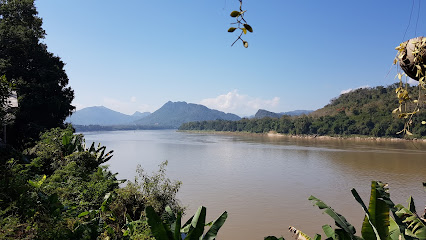
Thongbay Guesthouse Luang Prabang
Discover the serenity of Thongbay Guesthouse in Luang Prabang, where Lao culture meets modern comfort amidst stunning natural beauty.

Sanctuary Pakbeng Lodge
Discover tranquility and cultural richness at Sanctuary Pakbeng Lodge, a stunning retreat along the Mekong River, perfect for relaxation and adventure.
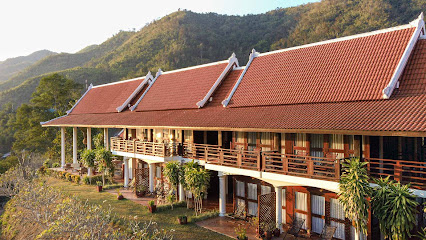
Unmissable attractions to see
Wat Xiengthong
Explore the breathtaking beauty and spiritual significance of Wat Xiengthong, a stunning Buddhist temple in the heart of Luang Prabang.

Luang Prabang Elephants camp
Discover the ethical haven for elephants at Luang Prabang Elephants Camp, a serene sanctuary in the heart of Laos.

Wat Pa Phon Phao
Discover the tranquil beauty of Wat Pa Phon Phao, a Buddhist temple in Luang Prabang, where spirituality meets stunning natural vistas.

Mekong Elephant Park Sanctuary
Experience the magic of the Mekong Elephant Park Sanctuary in Laos, where rescue, care, and education unite for the love of elephants.
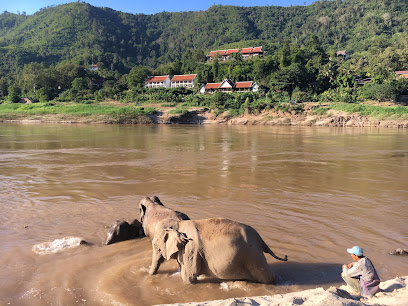
Khopfa Mekong Cruise
Explore the stunning landscapes and vibrant culture of Laos on the scenic Khopfa Mekong Cruise, an unforgettable journey on the Mekong River.
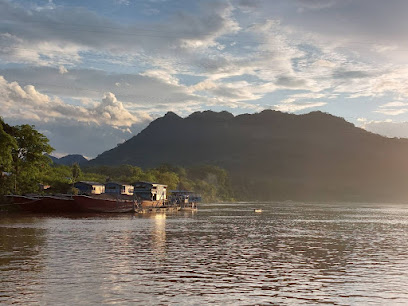
Nong Khiaw Viewpoint Trail Entrance & Ticket Office
Explore the breathtaking Nong Khiaw Viewpoint Trail, a stunning hiking destination in Laos offering panoramic views and lush landscapes.

Riverview Park
Explore the scenic beauty and tranquility of Riverview Park, where the Namkhan and Mekong rivers meet in Luang Prabang.

Water Fall Nam Dee
Experience the serenity and beauty of Water Fall Nam Dee in Luang Namtha, a perfect destination for nature lovers and adventure seekers.
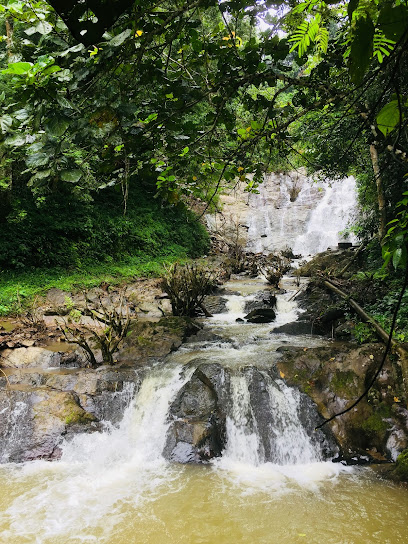
Tad Mook Waterfalls
Discover the serene beauty of Tad Mook Waterfalls in Sop Keng, a hidden gem surrounded by lush nature and perfect for adventure seekers.

Oudomxay Provincial Museum
Explore Laos' diverse cultures and rich history at Oudomxay Provincial Museum, a hidden gem in Muang Xai for culture enthusiasts.

Wat Makmo
Discover the serene beauty of Wat Makmo, a hidden Buddhist temple in Luang Prabang showcasing rich cultural heritage and breathtaking architecture.

Phar Noi History Cave
Discover the ancient stories and breathtaking views at Phar Noi History Cave in Nong Khiaw, a hidden gem for history and nature enthusiasts.

ສວນອາງຸ່ນບ້ານນາແສນຄຳ
Explore the lush gardens of Muang Xai, where vibrant flora and serene landscapes offer a perfect escape into nature's beauty.

Pha keo viewpoint
Discover the stunning Pha Keo Viewpoint in Nong Khiaw, Laos, and immerse yourself in breathtaking views and serene landscapes.

老挝南甲瀑布
Explore the timeless beauty and rich history of 老挝南方的古老景点, a captivating tourist attraction in Laos.

Essential places to dine
Manda de Laos
Discover authentic Laotian cuisine at Manda de Laos in Luang Prabang - where tradition meets tranquility amidst stunning gardens.

Khaiphaen
Experience authentic Laotian cuisine at Khaiphaen, where tradition meets modernity in every delicious dish.

good people good food good price
Discover authentic Laotian cuisine at 'Good People Good Food Good Price', where delicious meals meet unbeatable prices in Luang Prabang.

Kin Khao @Heuan chan Heritage house
Experience exquisite Asian Fusion cuisine in Luang Prabang's charming heritage house - a must-visit for food lovers!

Tamnak Lao Restaurant Luang Prabang
Experience authentic Laotian cuisine at Tamnak Lao Restaurant in Luang Prabang – where tradition meets flavor.
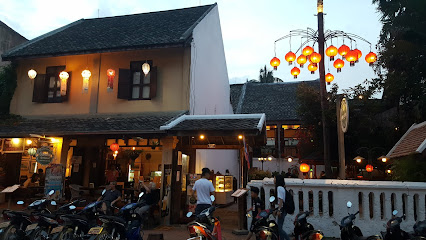
Hasan Restaurant
Experience authentic Indian flavors at Hasan Restaurant in Pak Beng - a culinary gem offering delicious dishes in a welcoming atmosphere.

Local Restaurant Ban Jek
Experience authentic Laotian cuisine at Local Restaurant Ban Jek in Luang Prabang - where every dish tells a story.

Kanyas Restaurant
Discover delicious Lao cuisine at Kanyas Restaurant in Muang Xai - a must-visit dining spot for every traveler seeking authentic flavors.

Manivanh Restaurant
Savor authentic Laotian dishes at Manivanh Restaurant in Pak Ou, where tradition meets flavor in a welcoming atmosphere.

MandaLao Restaurant and Elephant Rescue Park
Experience exquisite Laotian cuisine and ethical elephant rescue at MandaLao Restaurant and Elephant Rescue Park.

Souphailin Restaurant
Experience authentic Lao flavors at Souphailin Restaurant in Muang Xai - where every dish tells a story.

ຮ້ານ ບຸບເຟແວວດາວ ສາຂາ 1
Savor authentic Lao flavors at ຮ້ານ ບຸບເຟແວວན་ཐུ་མི་རུས་ཡས་དབང་པོ་1 - A delightful hotpot buffet experience.

Green Restaurant
Discover the essence of Lao cuisine at Green Restaurant in Muang Xai - where every dish tells a story!

Nhà Hàng Lào Việt
Experience the rich flavors of Laotian and Vietnamese cuisine at Nhà Hàng Lào Việt in Muang Xai – a culinary gem for all food lovers.

Ms. Southida's Ice Cream
Discover Ms. Southida's Ice Cream in Muang Xai - A delightful dessert haven offering unique local flavors in every scoop.
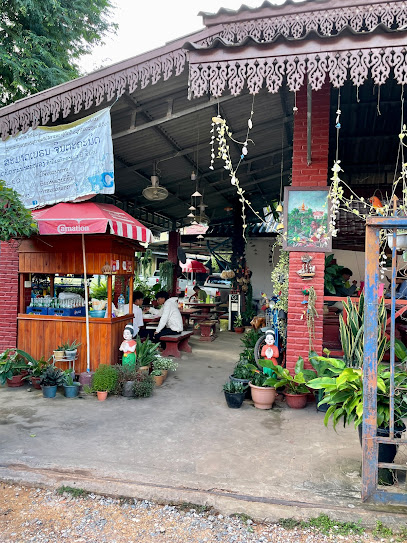
Markets, malls and hidden boutiques
The Boutique by Ock Pop Tok
Explore the vibrant craftsmanship of Laos at The Boutique by Ock Pop Tok, where handmade textiles and unique home goods await.
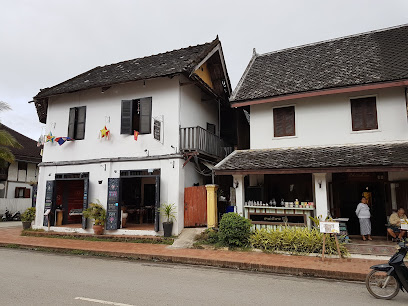
ມິດຈະເລີນ ຂາຍສິນຄ້າໄທ
Discover unique home goods that showcase the rich culture of Lao craftsmanship at Mit Chalen in Udomxai Province.

Charming Lao Coffee
Experience the rich flavors and warm hospitality at Charming Lao Coffee, a quintessential stop for coffee lovers in Muang Xai, Laos.

Ma Te Sai
Explore unique gifts, enjoy local coffee, and embark on scenic boat tours in the heart of Luang Prabang at Ma Te Sai.
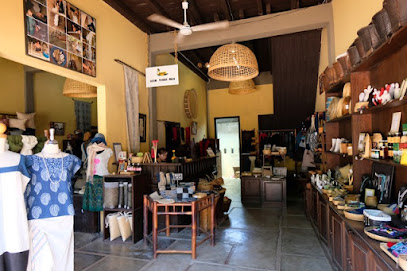
Pathana Boupha Antique House
Discover the rich cultural heritage of Laos at Pathana Boupha Antique House, a treasure trove of antiques and local crafts in Luang Prabang.

Chom Ong Cave | ຖຳ້ຈອມອອງ
Explore the enchanting Chom Ong Cave in Laos, a stunning natural attraction with breathtaking rock formations and a rich ecosystem.
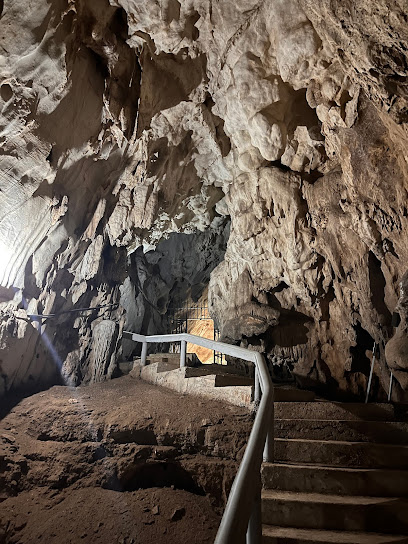
ຮ້ານຂາຍລົດໃຫຍ່ ນ.ບົວພັນ
Explore a vibrant selection of vehicles at ຮ້ານຂາຍລົດໃຫຍ່ ນ.ບົວພັນ, where local culture meets automotive excellence.

Dan Sawan supermarket
Explore the heart of Muang Xai at Dan Sawan Supermarket, where local culture and flavors come alive in a vibrant shopping experience.

UNILEVER OUDOMXAY (WHOLESALE SHOP) ຮ້ານ ຈັນທະວົງ ຕົວແທນຈຳໜ່າຍເຄື່ອງ ຢູນິລິເວີ
Discover local flavors and essentials at Unilever Oudomxay, your go-to grocery store in Muang Xai for an authentic shopping experience.

Lalao
Discover Lalao, the ultimate clothing store in Luang Prabang, offering a unique fusion of traditional and contemporary fashion styles.

SCG อุดมไช
Discover quality building materials and local charm at SCG อุดมไช in Muang Xai, a key destination for construction and renovation needs.

Jin Taiwan Bubble Tea
Discover the vibrant flavors of Jin Taiwan Bubble Tea in Muang Xai, where every sip is a delightful journey into the world of authentic bubble tea.

Khmu Gu Ler Handicraft
Discover the artistry of Laos at Khmu Gu Ler Handicraft, a unique clothing store offering authentic, handcrafted garments and textiles.

ນເບຍວື
Immerse yourself in local culture at ນເບຍວື, Pha Oudom's bustling supermarket, where vibrant markets meet authentic Laotian hospitality.

ຮ້ານvathsana shop
Discover the charm of Vathsana Shop in Ban Pho Hièou, where quality cosmetics meet local beauty traditions.

Essential bars & hidden hideouts
Amphai restaurant & bar
Experience the culinary artistry and vibrant atmosphere at Amphai Restaurant & Bar, a luxurious dining destination in Nateuy.

ຮ້ານອາຫານເຄປັອບ(K-POP)
Experience the vibrant nightlife at K-POP Bar in Samkan, where K-Pop culture meets delicious drinks and energetic ambiance.

Hong Tieng Coffee and Bar
Experience the unique ambiance of Hong Tieng Coffee and Bar in Muang Xai, where Chinese decor meets delightful beverages in a cozy setting.

34U卡拉OK酒吧
Discover the lively 34U Karaoke Bar in Muang Xai, where music meets fun and unforgettable nights await every tourist.

Sunset Bar & Restaurant
Discover the serene beauty and culinary delights at Sunset Bar & Restaurant in Pak Beng, where every meal is a picturesque sunset experience.

Oudomkham Restaurant
Discover the rich flavors of Laos at Oudomkham Restaurant in Muang Xai, where traditional dishes meet warm hospitality.

ຮ້ານ DISTRICT 65
Discover the lively atmosphere of DISTRICT 65, a premier bar in Muang Xai, offering an array of local and international drinks in a vibrant setting.
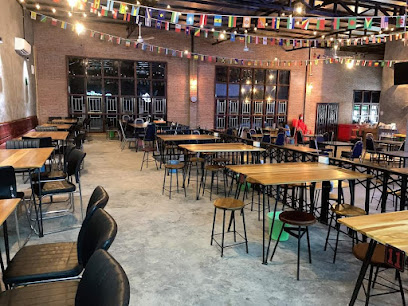
ຮ້ານອາຫານເດີໄນທ໌ ບ.ເຈງ
Experience the vibrant nightlife and local culture at ຮ້ານອາຫານເດີໄນທ໌ ບ.ເຈງ, a must-visit bar in Muang Xai for all travelers.

ຮ້ານ 2 Friends Bar
Discover the lively atmosphere and local flavors at 2 Friends Bar in Muang Xai, where every night is a celebration of culture and camaraderie.
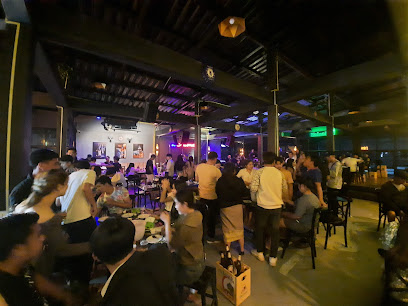
MOON SKY Bar
Discover the vibrant nightlife at MOON SKY Bar, your go-to destination in Muang Xai for stunning views and refreshing cocktails.

ອຸດຢມໄຊ
Experience the lively nightlife at ອຸດຢມໄຊ, a bar that blends tradition and modernity in the heart of Houaylin.

ຮ້ານອາຫານ ທູໄນທ໌
Discover the lively atmosphere and authentic flavors at ຮ້ານອາຫານ ທູໄນທ໌, a must-visit bar in Ban Phoukeu, Laos.

Miss Xay Restaurant
Discover the authentic flavors of Laos at Miss Xay Restaurant in Muang Xai, where every dish is a celebration of local culinary traditions.

oke
Experience the vibrant local culture at Oke Bar in Nam Thouam, perfect for relaxation and socializing with locals and travelers alike.

ຮ້ານຕຳແລະດາດນາງກຸ້ງ ນາໂຄ້ງ
Immerse yourself in the lively ambiance of ຮ້ານຕຳແລະດາດນາງກຸ້ງ ນາໂຄ້ງ, a vibrant bar in Ban Lo Sa offering local drinks and a taste of authentic culture.

Local Phrases about Oudomxay Province
-
- Helloສະບາຍດີ
[sa baai di] - Goodbyeສະບາຍດີ
[laa gon] - Yesດິນ
[dii] - Noບໍ່
[bo] - Please/You're welcomeກະລຸນາ
[ka loo na] - Thank youຂອບໃຈ
[kop jai] - Excuse me/Sorryຂໍຂອບດີ
[khok kop di] - How are you?ສະຖານີໄດ້ບໍ?
[sa thanai dai bo?] - Fine. And you?ດີບໍ. ແລ້ວເຈົ້າ?
[dii bo. laew jao?] - Do you speak English?ທ່ານເວົ້າພາສາອັງກິດບໍ?
[thaa naw waa pha sa ang kit bo?] - I don't understandຂ້ອຍບໍ່ເຂົ້າ
[koi bo kaw]
- Helloສະບາຍດີ
-
- I'd like to see the menu, pleaseຂ້ອຍຕໍ່ກຽວເມື່ອຈົດບັນ
[koi toy khyu mui jod ban] - I don't eat meatຂ້ອຍບໍ່ເກືອງແລະ
[koi bo keuang lae] - Cheers!ຄິ່ງແດງ
[king daeng] - I would like to pay, pleaseຂ້ອຍຕໍ່ກຽວຈ່າງ
[koi toy khyu chang]
- I'd like to see the menu, pleaseຂ້ອຍຕໍ່ກຽວເມື່ອຈົດບັນ
-
- Help!ຊ້າງຊ້າງ
[sang sang] - Go away!ໄວ້ອອກ
[wai ok] - Call the Police!ໂທແຂວງ
[tho khwaeng] - Call a doctor!ໂທຢ່າງພືດ
[tho yang phuet] - I'm lostຂໍຂອບດີ
[khok kop di] - I'm illຂໍຂອບດີ
[khok kop di]
- Help!ຊ້າງຊ້າງ
-
- I'd like to buy...ຂ້ອຍຕໍ່ກຽວຊື່...
[koi toy khyu su...] - I'm just lookingຂ້ອຍສະບາຍເອົາ
[koi sa baai ao] - How much is it?ຈຳນວນໝົດໝູ່?
[jam nuan mot mui?] - That's too expensiveນີ້ຂອງຫຼາຍແລ້ວ
[ni khong lalao laew] - Can you lower the price?ເຈົ້າສາມາດຫຼາຍອອກໃນເງີນໄດ້ບໍ?
[jao samat lalao ok nai ngern dai bo?]
- I'd like to buy...ຂ້ອຍຕໍ່ກຽວຊື່...
-
- What time is it?ເວລາແລ້ວແມ່ນຫຼາຍ
[welaa laew men lao] - It's one o'clockແມ່ນຫຼາຍ
[men lao] - Half past (10)ເວລາສິບຮ່ວມ
[welaa sip huam] - Morningເວລາເຊົ້າ
[welaa sao] - Afternoonເວລາບ່ວງ
[welaa bwang] - Eveningເວລາຂ້າງ
[welaa kang] - Yesterdayວັນວັດ
[wan wat] - Todayວັນນັດ
[wan nat] - Tomorrowອື່ນວັດ
[uen wat] - 1ໜ້າ
[na] - 2ສອງ
[song] - 3ສາມ
[sam] - 4ສີ່
[si] - 5ຫ້າ
[ha] - 6ຫົກ
[hok] - 7ແປ
[pa] - 8ເກົ້າ
[kao] - 9ເຕ
[tay] - 10ສິບ
[sip]
- What time is it?ເວລາແລ້ວແມ່ນຫຼາຍ
-
- Where's a/the...?ຢາກຕາມສະບາແຫນ...?
[yaak tam sa ba nan...?] - What's the address?ບໍ່ລິການທາງ?
[bo likan tang?] - Can you show me (on the map)?ທ່ານສາມາດໃຫ້ຄລິກຂໍ້ມູນໄດ້ບໍ?
[thaa naw samat kan lok mun dai bo?] - When's the next (bus)?ມື້ອື່ນມີລົດພັກໜ້າບໍ?
[muen uen mi lot pak na bo?] - A ticket (to ....)ບັນນາກີບ (ເຂົ້າ...)
[ban na ki bao (kao...)]
- Where's a/the...?ຢາກຕາມສະບາແຫນ...?
History of Oudomxay Province
-
The history of Oudomxay Province can be traced back to the ancient Mon-Khmer people, who first settled in the region thousands of years ago. These early inhabitants practiced subsistence agriculture and lived in small, scattered villages. Evidence of their presence is found in the form of ancient artifacts and primitive tools unearthed in various archaeological sites across the province.
-
During the 14th century, Oudomxay became part of the powerful Lan Xang Kingdom, which was founded by King Fa Ngum. The province played a strategic role in the kingdom, serving as a vital trade route and military outpost. The influence of the Lan Xang era is still evident today in the form of ancient temples and ruins scattered across the region.
-
In the late 19th and early 20th centuries, Oudomxay came under French colonial rule as part of French Indochina. The French influence can be seen in the province's architecture, with colonial buildings and old administrative offices still standing in the provincial capital, Muang Xay. This period also saw the introduction of new agricultural practices and infrastructure development.
-
After gaining independence from France in 1953, Laos, including Oudomxay, experienced a turbulent period marked by civil war and political instability. The province was a key battleground during the Laotian Civil War (1959-1975), with various factions vying for control. Remnants of this era, such as bomb craters and war memorials, can still be seen in some parts of Oudomxay.
-
In recent decades, Oudomxay has undergone significant development, transforming from a remote, rural area into a bustling province. Investments in infrastructure, such as roads, schools, and healthcare facilities, have improved the quality of life for its residents. The province is now a hub for commerce and tourism, attracting visitors with its rich cultural heritage and natural beauty.
-
Oudomxay is home to a diverse array of ethnic groups, including the Khmu, Hmong, and Tai Lue. Each group has its own distinct customs, languages, and traditions. This cultural mosaic is reflected in the province's vibrant festivals, traditional music, and colorful textiles. Visitors can experience the unique way of life of these communities through homestays and cultural tours.
-
Buddhism plays a central role in the cultural and spiritual life of Oudomxay. The province is dotted with numerous temples and stupas, some of which date back centuries. Notable sites include Wat Phou That, a revered temple located on a hill overlooking Muang Xay, and Wat Ban Na Muang, known for its intricate wood carvings and serene atmosphere.
Oudomxay Province Essentials
-
Oudomxay Province is located in the northern part of Laos. The nearest international airport is Luang Prabang International Airport, approximately 150 kilometers away. From Luang Prabang, you can take a bus or a private taxi to Oudomxay, with the journey typically taking around 4 to 5 hours by road. Oudomxay also has its own small airport, Oudomxay Airport (ODY), which offers domestic flights from Vientiane and other regional airports.
-
Within Oudomxay Province, local transportation includes tuk-tuks, songthaews (shared pickup trucks), and motorbike rentals. Tuk-tuks and songthaews are readily available in towns and can be used for short distances. For exploring remote areas, renting a motorbike or hiring a private car with a driver is recommended. Buses and minibuses also connect Oudomxay with other provinces and major cities in Laos.
-
The official currency in Laos is the Lao Kip (LAK). Credit cards are accepted in some hotels, restaurants, and larger shops, but it is advisable to carry cash, especially in smaller establishments and rural areas. ATMs are available in Oudomxay town, but it is wise to withdraw sufficient cash before traveling to remote areas. Currency exchange services are also available in banks and some hotels.
-
Oudomxay Province is generally a safe destination for tourists. However, as with any travel destination, it is advisable to take standard precautions. Avoid walking alone at night in unfamiliar areas and keep an eye on your belongings in crowded places. There are no specific high-crime areas targeting tourists, but it is always best to stay vigilant and aware of your surroundings.
-
In case of emergency, dial 1191 for immediate assistance. The local police station and medical facilities are available in Oudomxay town. It is recommended to have travel insurance that covers medical emergencies. For minor health issues, there are pharmacies in the town where you can purchase over-the-counter medications. The main hospital in Oudomxay town can handle more serious medical conditions.
-
Fashion: Do dress modestly, especially when visiting religious sites. Avoid wearing revealing clothing. Religion: Do respect local customs and traditions. Always remove your shoes and cover your head when entering temples and monasteries. Public Transport: Do be respectful and give up your seat to elderly passengers. Don't eat or drink on public transport. Greetings: Do greet people with a slight bow or a 'nop' (placing your hands together in a prayer-like gesture). Eating & Drinking: Do try local delicacies and accept food offerings graciously. Don't refuse hospitality, as it is considered impolite.
-
To experience Oudomxay Province like a local, visit the vibrant markets where you can buy fresh produce and traditional Lao goods. Engage with locals, as they are often friendly and willing to share stories about the province's history and culture. Don't miss visiting the Ban Na Xieng Di village to witness traditional weaving practices. For a unique experience, explore the Nam Kat Waterfall and enjoy trekking through the lush forests of the province.
Trending Landmarks in Oudomxay Province
-
Kuang Si Waterfall
-
Luang Prabang morning market
-
Pak Ou Caves
-
Namkat Yorla Pa Resort
-
Traditional Arts and Ethnology Centre
-
Victoria Xiengthong Palace
-
Ban Xang Hai
-
Mad Monkey Luang Prabang
-
Garavek Storytelling
-
Saynamkhan River View
-
MandaLao Elephant Conservation
-
Kin Khao @Heuan chan Heritage house
-
Ock Pop Tok Living Craft Centre
-
Thongbay Guesthouse Luang Prabang
-
Sanctuary Pakbeng Lodge
Nearby Cities to Oudomxay Province
-
Things To Do in Muang Sing
-
Things To Do in Phonsavan
-
Things To Do in Xieng Khouang
-
Things To Do in Vang Vieng
-
Things To Do in Nan
-
Things To Do in Chiang Rai
-
Things To Do in Sapa
-
Things To Do in Vientiane
-
Things To Do in Loei
-
Things To Do in Chiang Mai
-
Things To Do in Udon Thani
-
Things To Do in Pai
-
Things To Do in Hanoi
-
Things To Do in Sukhothai
-
Things To Do in Thakhek





